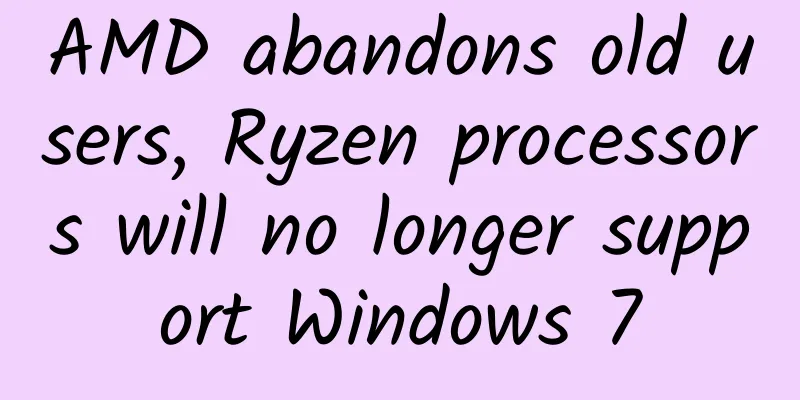How shared bikes make profit from "impossible" to "possible"

|
In two articles I wrote recently, I talked about the same topic: as a product manager , you must try to learn to conduct business model analysis, otherwise it is easy to become a mere product designer. Over time, it is easy for product managers to fall into the short-sighted mindset of “ I only care about whether the KPI of the product I’m making is achieved .” As product managers, whether they are user product managers, data product managers, or business product managers, we care not only about user value, whether data analysis tools are easy to use, or the strategy of advertising platforms, but we should also try to care about the value of the products we make in the entire company system. We need not only product design methods, but also some product thinking methodologies. Can shared bikes really be profitable? Bike sharing has become a key topic that cannot be avoided in the past year. Regardless of the analysis and speculation of various models, they are often based on the user side and the investor side. During this period, a lot of gossip is flying around, but few people seriously discuss the business model behind it. Previously, Hu Weiwei, the founder of Mobike, said in a speech that if it failed, the worst that could happen was that it was a charity. This statement makes the issue of shared bicycle profitability even more confusing. According to statistics, 18 shared bicycle players have completed financing of more than 3 billion yuan. However, is it really possible for shared bicycles to make a profit when the operating costs seem so high? First of all, let me state: I believe that shared bikes can be profitable, but I will first analyze the models that are unlikely to be profitable, and then analyze the models that are likely to be profitable. Four common models make it impossible for shared bikes to make a profit We have summarized all possible profit models for shared bikes and believe that four of them make it impossible for shared bikes to make a profit. ▐ Unilateral trading model The various shared bicycles that are still on the road today all use a one-sided transaction model: The user scans the code to unlock the car, and the fee is automatically deducted after the ride. The profit margin of this model can be calculated relatively accurately, and the ceiling is relatively low. For example. For example, if the cost of a Mobike bike is 1,500 yuan and the natural depreciation period is 4 years, then the annual depreciation cost is less than 400 yuan, or about 1 yuan per day. If we take into account the operating costs such as deployment, maintenance, damage, and theft, the daily operating cost of a vehicle can be approximately 2-3 yuan. If the cost of each ride is 1 yuan, then if each vehicle is ridden 3 times a day, the cost can be broken down, and if it is ridden more than 3 times a day, it can be profitable. This model is a typical unilateral supply and demand transaction. It does not belong to the Internet platform model, but is more like the traditional supply chain model: Bicycle manufacturers sell bicycles to Mobike, and Mobike then provides rental services to C-end users through a one-time rental method, paying on a per-time basis. This model is actually not a sharing economy model, but a unilateral leasing model . For Mobike, it is very important to acquire as many C-end users as possible. In the early stage, it needs to attract users through various discounts and promotions, then cultivate habits, and then find ways to increase the frequency of use of each vehicle. If there are only 1 million cyclists in a city, Mobike needs to find a way to keep these 1 million people in its hands. Its competition model is traditional service competition, and it only competes for unilateral users, so it can only engage in price wars and find ways to stimulate demand. The ceiling of this model is very low. A city may only be able to operate to the point where each bike is ridden three times a day, which will barely break even and make it difficult to make a profit. ▐ Deposit financial model In addition to unilateral transactions, almost all shared bicycle platforms have started the "pay a deposit before using" model, with the deposit ranging from 99 yuan to 299 yuan per person. Let's do some calculations. If a shared bicycle platform can attract 10 million C-end users, each with a deposit of 200 yuan, and the average period for users to return their deposits is 6 months, then the platform can ensure that it maintains a cash reserve of up to 2 billion yuan within half a year. It would be a shame not to invest so much money. If the annualized rate is 5%, then this platform can earn at least 100 million more in a year. This kind of game of getting something for nothing is actually a typical financial investment. Banks, insurance companies, and some Internet platforms all play this way, and the risk is very low. However, for shared bicycle platforms, the profit ceiling is also very low. Because the upper limit of C-end users determines the size of the deposit, it is essentially the same as the first model. This model may help the platform break even on costs, but it is unrealistic to expect it to make large-scale profits. ▐ Bilateral bike-sharing model There is a hypothesis that if the shared bicycle platform can attract enough C-end users, that is, the market is large enough, can the shared bicycle model be truly realized - the bicycles are not provided by the platform, but by individuals or rental companies. 1. C2C bike-sharing model If there are enough C-end users, Mobike or ofo can try to rent the "password lock + GPS" to individuals, encourage individuals to put their bicycles on the platform for others to ride and use, and collect rental profits themselves. This method is very similar to Didi Hitch. But there is a big problem with this model: a bicycle is not a car . I can let others ride in my car, but I won’t lend my car to others casually, or to be more specific, I won’t lend my valuables to others casually. Then, a situation may arise where everyone shares bikes that are relatively poor quality and difficult to ride, and then no one will take care of these bikes, and the market will become more and more chaotic, which is a bit like "bad money driving out good money." But there is still a possibility, that is, I rent my bicycle worth 1,000 yuan to someone who cherishes it, just like the Airbnb model. Those high-end users who have higher requirements for riding quality will take better care of my bike, and the rental fee will be more expensive, which falls into the category of consumption upgrading. However, how big the space for this model is still needs in-depth analysis. After all, the conversion rate of high-end users from the vast number of bicycle users is unknown. The application scenarios are also very different from the current sharing model, and the profit margin is difficult to calculate. 2. B2C bike-sharing model Another bike-sharing model may be the emergence of some specialized bike rental companies, which will replace some of the work of Mobike and ofo today and specialize in supply and regional operations. This model is more like the car rental service on Ctrip , connecting with C-end users with car rental needs on one hand and local rental companies on the other. This model has a resounding name in the O2O era, called "city partner". Operating bicycles locally can separate risks from the platform, and the platform only focuses on ensuring service quality monitoring and maintenance of the platform itself, which is somewhat similar to the O2Oization of Taobao. However, this model is extremely difficult to operate, and local operators are most afraid that local tyrants will skip the platform and operate independently. In China's third- and fourth-tier cities, local tyrants have particularly strong say, and it is very likely that they will build their own regional platforms. In addition, in order to realize the B2C model, all operational links must be standardized and localization must be ensured to be quickly replicated, which poses a great challenge to the platform. Of course, once this model is implemented, the platform will become lighter and operational efficiency can be greatly improved. Of course, the monetization cycle of this model will be relatively long. Referring to Didi and Yidao Car Rental, we can see that the profit margin of this commission model will not be particularly large. 3. Value-added service model for C-end users I didn't originally want to write this model because it is impossible to run it on shared bicycles. Later I thought about it and decided to write it out so that we can see together why it doesn't work. The so-called value-added service model refers to providing exclusive value-added services to users at one end, and then letting users pay for the value-added services. Here, we only look at the possible value-added services for C-end users. In the domestic Internet, the most famous value-added service is QQ membership. The various privileges and diamonds of various colors are dazzling and make paying users very excited. Later, Momo memberships, Zhenai memberships, etc. all ended up with the same goal as QQ memberships. They all provide exclusive value-added services to C-end users and then let users pay. This profit model has huge potential. Momo was able to make a profit of 20 million US dollars when it had 100 million users. However, this model basically does not work in shared bicycles for one reason only - the last mile solves the problem of arrival, not the problem of what level of bike to ride. Value-added services need to bring me valuable social attributes, but ordinary bicycles do not have many social attributes. Unless they are bicycle enthusiasts, it is difficult for anyone to identify themselves through a bicycle, so there is no willingness to pay. Find the most suitable payer to make the profit space huge After reading the above four models that are often discussed by people, one can almost exclaim that "it is almost impossible for shared bicycles to make a profit." That’s right, if we always look at it from the perspective of C-end users, the above four models are difficult to make a profit. As an offline transaction scenario, no matter how you imagine it, you can’t escape the transaction itself. For thousands of years, people have tried almost all possible transaction scenarios. All transaction input-output ratios can be calculated, and the groups can be divided. It is obvious whether the profit margin is large. However, from the perspective of the Internet, profits cannot be judged solely on the transaction itself, nor can they be judged solely on C-end users. To make a profit, you need to find the most suitable payer, help the payer create the greatest value, and then let this value generate profit for yourself. For example: When Google was first founded, it tried to get companies such as Yahoo and Microsoft to acquire its search technology because Google's initial positioning was a "technology service company." But whether it is Yahoo or Microsoft, they are technology companies themselves. Why spend 1 billion US dollars to buy a search company that seems to have no technical content? At the time, Google was very confused about its profit model because it seemed that search could not make money. Later, investors introduced Schmidt to join Google as chairman. Schmidt's greatest contribution to Google, which can even be said to determine the survival of Google, is to help Google find the most suitable payers - advertisers. He transformed Google from a technology company into an advertising platform. Since then, Google has become the fastest growing Internet company in the early 21st century. After looking at this example, we see a very interesting phenomenon. Google's dilemma back then was that it had a large number of C-end users, but these users could not pay. It seemed like it was providing technical services to these C-end users for free, and there was almost no profit to speak of. Looking back, we find that today’s shared bicycles face the same problem. They have a large number of C-end users, but the price paid by users is very low, making it difficult to break even on costs, let alone make a profit. However, beyond these superficial features, Google and shared bikes have another key similarity - they both have access to all users' behavioral data. ▐ What can data do? Now that we have the data, we have to ask, what can the data do? A while ago, a European data analysis company called Cambridge Analytica became popular on WeChat Moments . The CEO of this company once publicly claimed that through data analysis, they could come up with a personality model for the 200 million people in the United States. They could analyze who is introverted, who is outgoing, who is a radical rightist, and who is a conservative leftist. They helped Trump carry out targeted and precise communications, thus helping Trump win the election. This might give you the creeps. Through data modeling, everything about a person can be visualized. What you like, your family's consumption level, your health condition, whether you want to drink milk tea when walking on the road, what you like to eat in the morning, etc., big data can all be visualized. Google has proven one thing over the past decade: through large-scale data analysis, it can help advertisers filter out more accurate audience groups and deliver targeted advertisements, thereby helping advertisers increase the conversion rate of target users , save advertising costs, and improve advertising efficiency. Google has revolutionized television media to a certain extent, and in China, Baidu has also revolutionized CCTV to a certain extent. However, Google's data is incomplete and can only be broken down to groups, not individuals. Therefore, the conversion rate can only be slightly higher than that of the media, but it is impossible to achieve advertising that is responsible for the conversion results. For example, Google can achieve approximately 1,000 to 10,000 impressions and can convert 10 target users. This conversion rate has a large fluctuation range and the effect is difficult to evaluate. If Google can conduct accurate data analysis down to the individual level, it may be able to ensure that every 1,000 impressions can bring in at least 10 target users, and the premium space for advertising will become larger. A mind-blowing data profit model Now that we have the data in hand, we try to think out of the box. Any product form that can reach C-end users can be called traffic . In the past it was web pages, and in the future it may be artificial intelligence + smart hardware. An assistant robot, a smart refrigerator at home, a smart bracelet, a smart home robot, etc. Because this kind of product becomes ubiquitous, all aspects of a user's information will be digitized, and the form of advertising at that time may undergo earth-shaking changes. Any form of human-computer interaction will become a carrier for Baidu's advertising. Advertisements that were once only available through web pages may now be carried by a series of human-computer interactive smart hardware and artificial intelligence products, and the business model of smart hardware will also change. So, can Mobike or ofo bikes themselves become the carrier of the offline last-mile advertising system? ▐ What are the possible differences between Mobike and ofo in terms of data profit model Seeing this, I guess you may have a question, "How can a bicycle carry advertisements? Does it need to add a screen?" Now let’s try to analyze in detail the differences between Mobike and ofo in their data profit models. 1. Mobike may be involved in offline last-mile payment transactions Mobike has a wealth of data because it has GPS. It can tell you where you live, where you work, where you pass by every day, where you have stopped for a short time, and so on. Let's take an example scenario: If Mobike analyzes the rich data and obtains a piece of information, it is that among the users who ride in Zhongguancun at noon every day, about 10% may buy a cup of milk tea after lunch. If there is a milk tea shop in Zhongguancun, it takes 3 minutes to make a cup of milk tea, which means 20 cups per hour. If it works at full capacity for 15 hours a day, the maximum daily output is 300 cups. If each cup of milk tea sells for 10 yuan, the daily revenue can be 3,000 yuan. If the milk tea shop can only achieve 1/3 of its sales on average every day (taking into account factors such as tidal changes in crowd flow), then the average daily revenue is 1,000 yuan. Excluding store rent, labor, material costs and other expenses, the profit is 500 yuan per day and 15,000 yuan per month. If Mobike can help milk tea shops conduct data analysis and find that among all the people who drink milk tea in Zhongguancun, only about 10% have consumed in its stores, it means that it still has 90% profit margin. Now Mobike says, I can help you with precise targeted advertising marketing , but you have to pay me advertising fees. I will give you a discount on milk tea to 8 yuan per cup, and I can help you earn 2,000 yuan a day. The milk tea shop will definitely cooperate. A small amount of advertising fee can be exchanged for an extra 1,000 yuan, and the profit increases by 200%. Why can Mobike do this? Answer: Tencent invested in Mobike. WeChat Pay has already opened up 90% of offline online payment scenarios. WeChat needs to enrich its last-mile traffic diversion capabilities in these scenarios to increase payment traffic. What can provide the last mile of traffic for WeChat must be a sophisticated map-level application that can draw people’s travel data, which is exactly what Tencent lacks. Mobike's 24-hour travel map of Shenzhen With this map and Tencent's WeChat Pay, the "milk tea shop revenue generation" scenario I described above will become possible. Here I have a little guess as to why Alibaba did not invest in Mobike? Logically speaking , Alipay and WeChat Pay are direct competitors, and their models are exactly the same, but Alibaba did not invest heavily in Mobike. I guess the most likely reason is that Alibaba already has Amap, so it doesn't need to spend such a high price to invest in a high-risk project like Mobike. It is understood that Amap can draw detailed travel data of at least 200 million users every day, and its level of detail is no less than that of Mobike. Therefore, this also explains to a certain extent why Baidu did not enter the market. After all, on the one hand, Baidu does not have offline payment scenarios, and on the other hand, Baidu also has Baidu Maps. 2. Ofo may enter the automotive market So, will ofo follow the same path as Mobike? I guess not likely. On the one hand, ofo does not have a big player like WeChat Pay behind it, and on the other hand, ofo does not have GPS. Its data comes entirely from users' mobile phones, which makes the data much less refined. So, how will ofo make profits from data? Let’s take a look at who is the investor behind ofo – Didi Chuxing. It has long been no secret that Didi wants to engage in transactions in the automobile market. Didi’s test drives, car rentals, and even insurance businesses are all related to automobile transactions and the aftermarket. With such a large user base, Didi is considering how to gradually convert these users into car buyers. In China, owning a car and a house is a traditional concept. No matter how popular the sharing economy is, buying a car is still an indispensable need for young people. The average car replacement cycle among young people has dropped from every five years to every three years. Let's take another example scenario: If Didi has data to prove that among all its users (including taxi riders and car owners), about 1 in every 10,000 people has the possibility of buying a car. What Didi needs to do now is to catch this person and sell him to the 4S point as soon as possible. If the cost for a 4S store to obtain customer source intelligence is 2,000 yuan, Didi can now occupy this market as long as it sells it to the 4S store at a price lower than this. Therefore, for Didi, it is important to attract as many users with travel needs as possible, and then obtain as much travel data as possible to dig out the demand for car purchases. Ofo fills the gap of a certain user group of Didi, which may be students or young people who seldom take taxis on a daily basis. After all, taking taxis frequently is still very expensive, and the current purchasing power of ofo users may not be very strong, either because their income is still relatively low or they are still relatively young. However, this group of people are the future car-buying group, and it is necessary to seize them early. Ofo's operational strategy also confirms its desire to capture as many young user groups with low spending power as possible. Whether it is the bicycle cost, deployment ratio, deployment area selection, or operation model, it proves that ofo is penetrating into the potential car consumer group. summary When the online traffic dividend disappears, all companies are looking for new traffic, but some companies are trying to dig out deeper value from the traffic in order to find richer profit models. Datafication is the foundation and guarantee for this kind of deep mining. The popularity of big data and artificial intelligence also proves that the future of data analysis is getting brighter and brighter. However, not all data models are profitable. To make data valuable, it must either generate additional revenue for the payer, save the payer additional expenses, or reduce the payer's existing operational risks. We will discuss this part in depth later. As product managers, we need to have a deeper understanding of the value of business models, so that we can find our position in our work and future career planning, and better plan the development of our products. Again, for a product manager, if he does not understand the business model, he can only be a primary product function designer. Mobile application product promotion service: APP promotion service Qinggua Media advertising The author of this article @帅帅的帅 is compiled and published by (Qinggua Media). Please indicate the author information and source when reprinting! Site Map |
>>: Image of lipstick: What is keyword density? Is SEO optimization affected by its density?
Recommend
How do the old men in the park master the secret of whipping at supersonic speeds?
Everyone must be familiar with whips. They can be...
Techniques and strategies for Weibo promotion and traffic generation
Weibo is a platform with huge traffic, with two s...
I advise you to try Guizhou Matcha, just one reason is enough!
Matcha ice cream, matcha latte, matcha yogurt... ...
Is the cotton bollworm also picky about food? The cotton bollworm: I don’t like to eat every leaf
Produced by: Science Popularization China Author:...
Video games are in urgent need of new ideas. Can Super Gun King achieve a breakthrough?
The "Oreki Project" announced that VR o...
Channels are no longer king: Tencent Games will be forced to open its arms
At the just concluded Tencent 2014TGC, the author...
Pinduoduo’s method of improving user conversion rate!
Pinduoduo, an e-commerce company, achieved revenu...
In-depth interpretation of "TikTok Enterprise Blue V White Paper": What should TikTok Blue V do?
At the end of June, Douyin released the "Dou...
World Pancreatic Cancer Day丨Faced with the “King of Cancer”, can we only surrender?
The third Thursday of November is World Pancreati...
Apple and Samsung's market share has both declined. Why are domestic mobile phones rising?
In the first quarter of this year, Apple and Sams...
“Eating while it’s hot” may really cause cancer, so I advise you to stop immediately!
Freshly brewed hot tea, freshly cooked hot soup T...
Technology "cultivates" new things丨Beidou, 5G and autonomous driving are also used in the fields
...
What are the applications of WeChat Mini Programs in new retail?
Mini Program is a kind of software that can be us...
Feel and create the future. No technology without GAC. GAC 2020 Technology Day has a major announcement
On July 28, GAC TECH DAY 2020 with the theme of &...
"Moonfall" Revelation: Will the Moon deviate from its orbit and crash into the Earth?
For billions of years, the moon has been the Eart...









